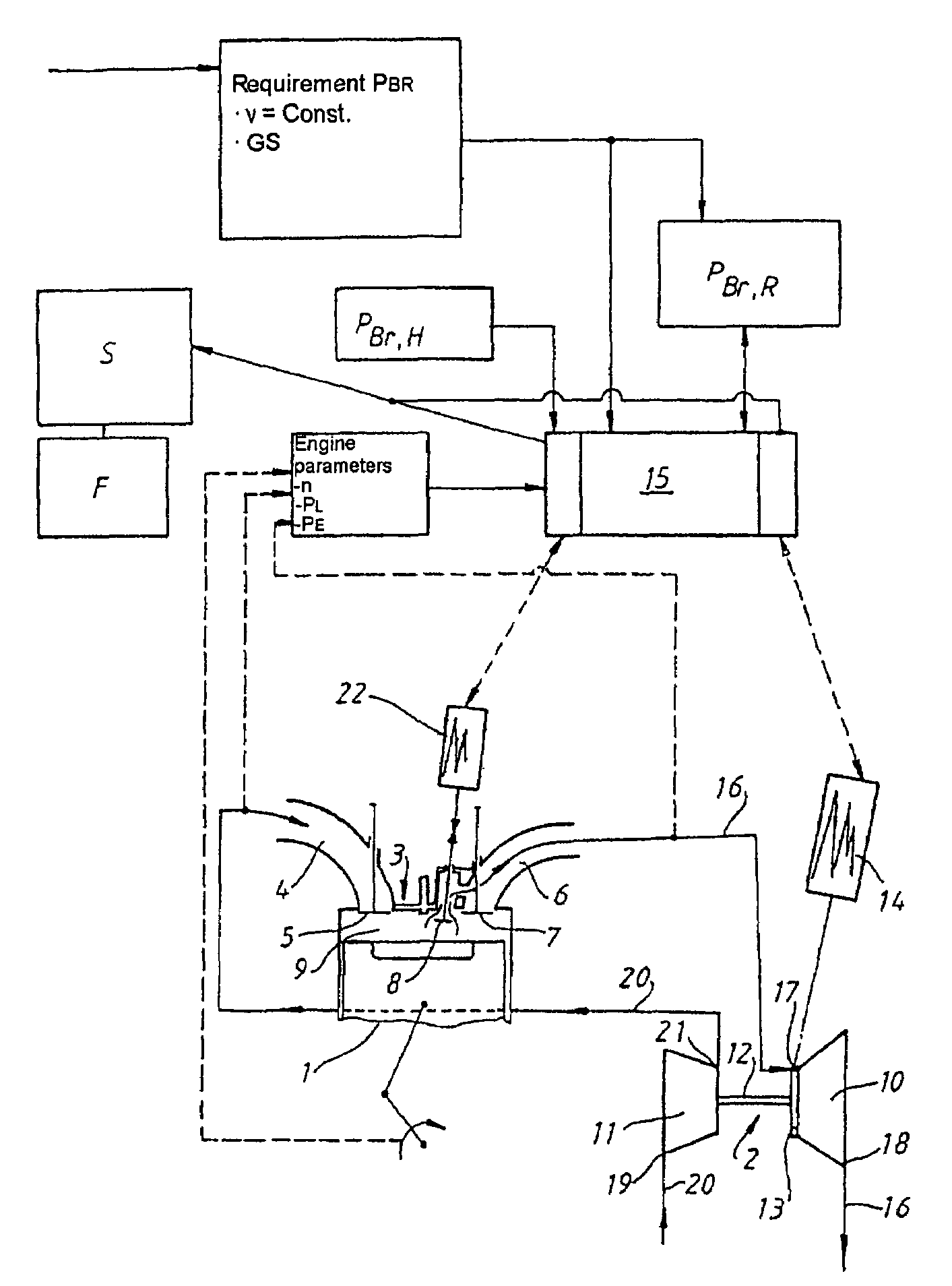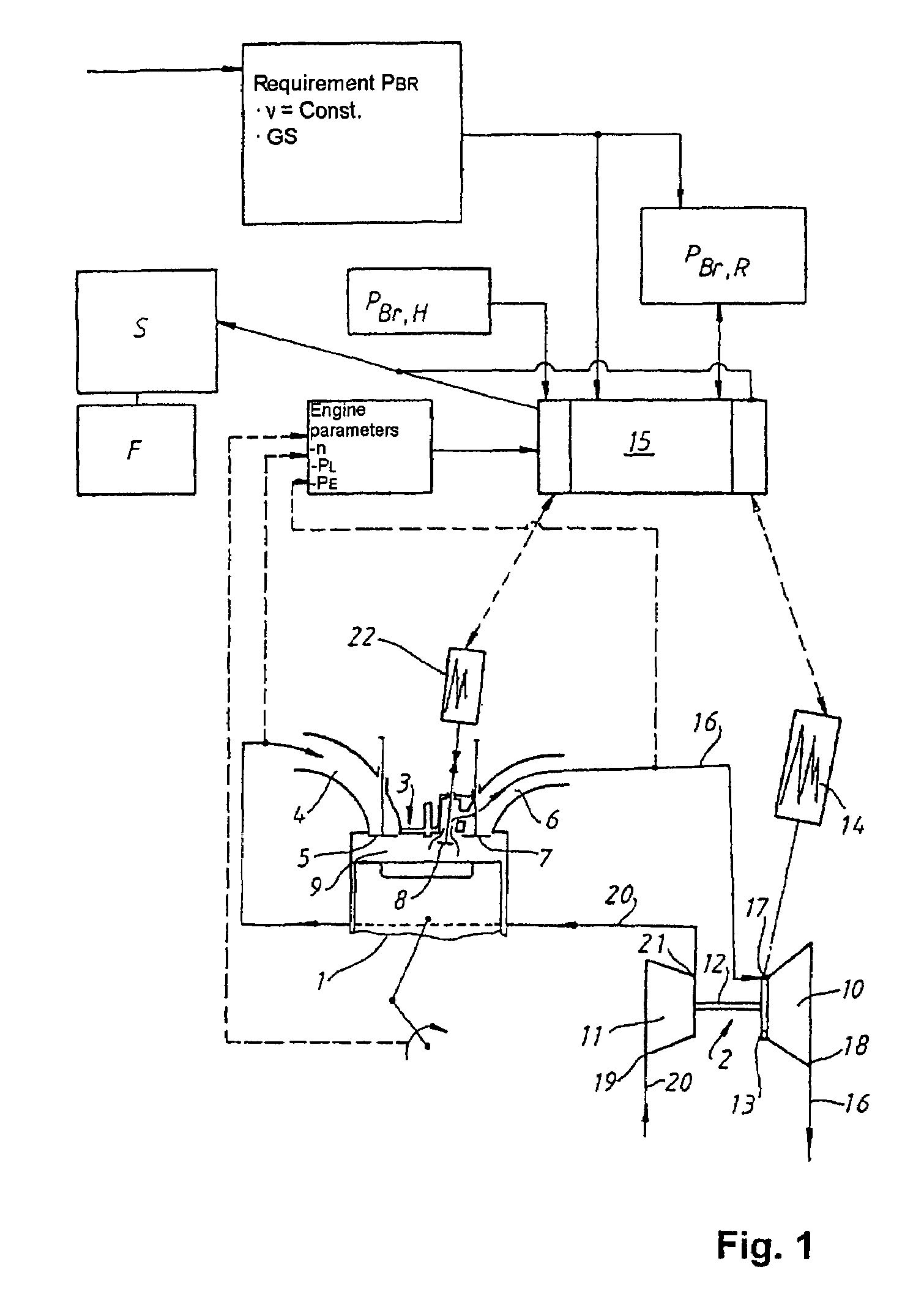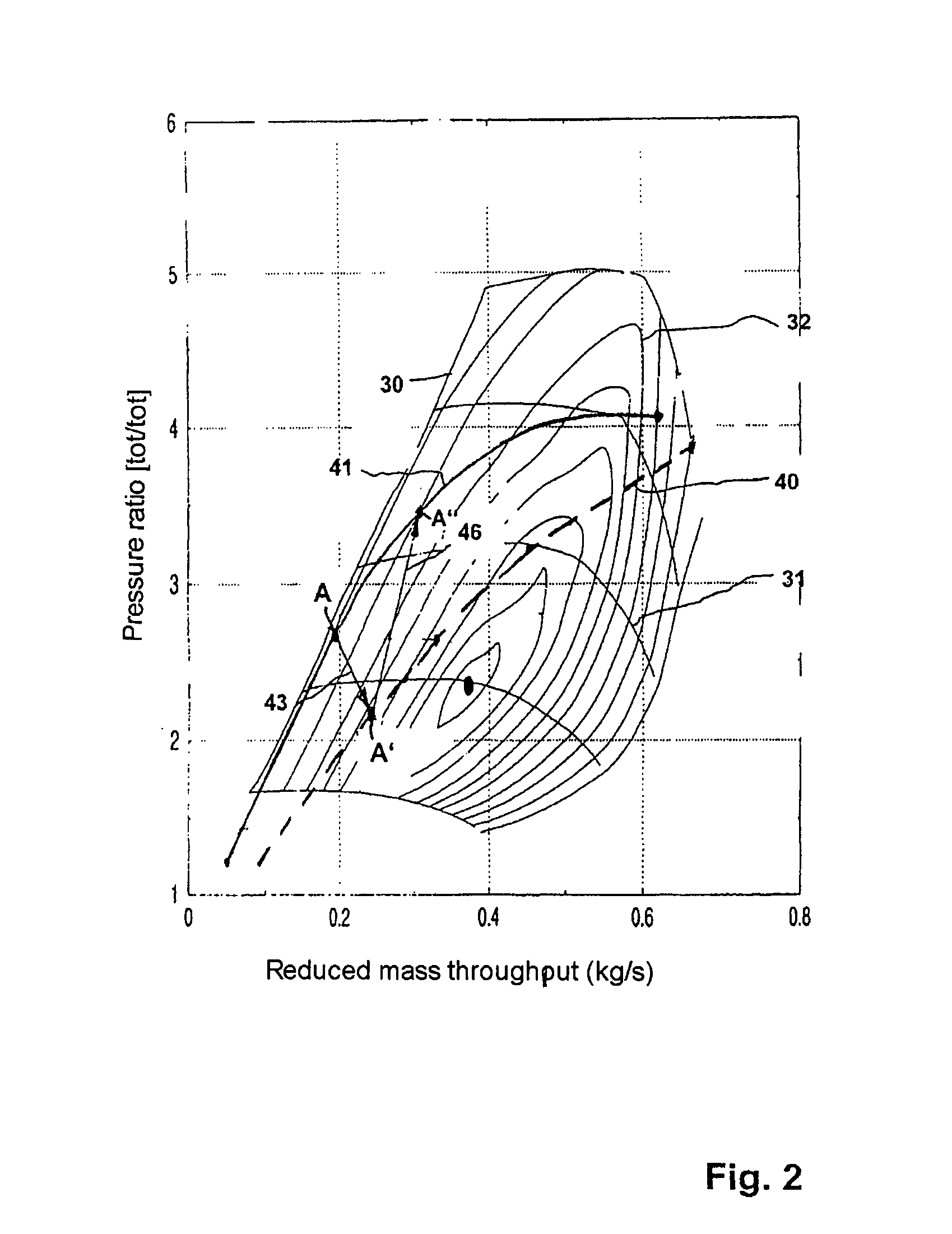Engine braking method for a supercharged internal combustion engine
a technology of internal combustion engine and braking method, which is applied in the direction of machines/engines, non-mechanical valves, electrical control, etc., can solve the problem of a relatively small crank angle in the angular range of all valves closed during the compression stroke, and achieves a reduced load, lower load, and higher mass flow throughput
- Summary
- Abstract
- Description
- Claims
- Application Information
AI Technical Summary
Benefits of technology
Problems solved by technology
Method used
Image
Examples
Embodiment Construction
[0024]In the internal combustion engine shown in a diagrammatic illustration in FIG. 1, a cylinder 1 with charge exchange valves 5, 7 in the cylinder head 3 is illustrated. The internal combustion engine includes an exhaust gas turbocharger 2 which comprises an exhaust gas turbine 10 in the exhaust line 16 of the internal combustion engine and a compressor 11 in the intake tract 20, the turbine wheel being rotationally coupled to the compressor wheel via a shaft 12. The exhaust gas turbine 10 is equipped with a variable turbine geometry 13 for variably setting the effective turbine inlet cross section, the variable turbine geometry being adjustable via an actuator 14.
[0025]The combustion air is first supplied, in the intake tract 20, via the compressor inlet 19 to the compressor wheel in the compressor 11, is compressed there and enters the cylinder inlet via the compressor outlet 21. With the inlet valve 5 open, the compressed combustion air is supplied via an inlet duct 4 of the i...
PUM
 Login to View More
Login to View More Abstract
Description
Claims
Application Information
 Login to View More
Login to View More - R&D
- Intellectual Property
- Life Sciences
- Materials
- Tech Scout
- Unparalleled Data Quality
- Higher Quality Content
- 60% Fewer Hallucinations
Browse by: Latest US Patents, China's latest patents, Technical Efficacy Thesaurus, Application Domain, Technology Topic, Popular Technical Reports.
© 2025 PatSnap. All rights reserved.Legal|Privacy policy|Modern Slavery Act Transparency Statement|Sitemap|About US| Contact US: help@patsnap.com



